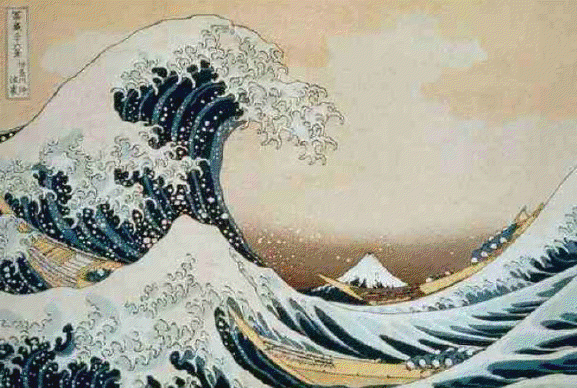I remember the day well. Like most people in urban areas in Japan, I live in a high-rise block of flats. I was at home in Osaka, engrossed in work at my desk when suddenly I felt a strange dizzying sensation. Thinking I’d perhaps been looking at my computer screen for too long, I realised something was seriously awry when my flatmate came running into my room and urged me to scramble under the kitchen table. As we took cover, our living quarters began to feel very much akin to a ship careering through choppy waters and I twigged that we were in fact experiencing quite a severe earthquake.
When the swaying finally subsided, we slowly emerged from our makeshift shelter feeling somewhat dazed and confused. Since we don’t have a TV, the closest thing at hand for any kind of news source was a mobile phone. When we switched it on, to our horror, the first thing we saw was a map of Japan flashing incessantly – the whole of the east coast from Hokkaido right the way down to the Kansai area was lit up all red. Alarms wailed. One announcement later and we learnt that the Tohoku region had been completely ravaged in an instant. (It was shocking to think that although the epicentre was hundreds of miles away, we’d still felt its power all the way down in Osaka. You can only begin to imagine the sheer intensity behind it…)
Without the initial severity of the situation quite sinking in, I look back on my first reactions as being extremely selfish. For a start, at least I was OK; and secondly, how annoying to be interrupted during my very important work. How shameful it is to think of this now.
But there are even deeper ponderings to have come out of the experience for me. When the actual gravity of the situation later came to light, not only in terms of the earthquake itself, but also the tsunami and nuclear disaster which ensued, I realised it was a wake-up call to bring me back to my spiritual path.
The following few days were, in many ways, worse than the disaster itself. Images began to pour in of the damage that had been wreaked, while the death toll increased into the thousands, seemingly by the minute. The fact that any of us were still alive began to feel like nothing short of a miracle. A very sobering thought…
My kind Buddhist Teacher, Geshe Kelsang Gyatso, encourages us to contemplate our own mortality because our death is the only certainty in this fragile and most unpredictable life. Suddenly Buddha’s teachings started to become very real and very powerful.
One of the things I love most about Kadampa Buddhism is the way the teachings are presented in such a systematic and logical way.
Two key aspects of the path to enlightenment are compassion and wisdom. Buddha tells us that one of the most powerful ways to nurture these qualities is to try and open our hearts by contemplating others’ suffering. When such horrible things were thrust upon us from the wreckage of the Japan disaster, it seems much easier to understand what Buddha is trying to convey to us here.
For example, I study Japanese with a teacher who comes from Tohoku. She told me the chilling tale of how her best friend was inside a bus in their hometown when the tsunami hit. It engulfed the whole bus and filled it with filthy water, shards of glass and other debris. Miraculously, she somehow managed to swim up through one of the broken windows and clutch onto the branch of a nearby tree, literally for dear life. She was extremely lucky – think about all those thousands who lost their lives in similarly terrifying circumstances, not to mention the trauma of their loved ones who got left behind. There were dozens of stories like that on the news in the weeks that followed. How can your heart not crack open when you hear about such things?
My Teacher encourages us to make Buddha’s teachings (known as Dharma) utterly personal to our own circumstances. I absolutely love this advice. Being confronted firsthand with such heart-wrenching stories has an extremely potent effect on the mind. Only then can we even begin to attempt to transcend such a tragedy.
I have also been totally inspired by the overall reaction from the people of Japan in the face of such adversity. Patience, consideration, co-operation, calmness. These are just a few of the wonderful qualities I have personally witnessed. Everywhere you go, slogans of ‘Ganbare Nihon!’ can be seen – which translates roughly as something like ‘Together we can get through this’.
This week marks the first anniversary of the disaster and I’ve been watching some documentaries on YouTube that revisit it. They’re another stark reminder of not only the aftermath, but also of our general predicament as human beings. Life is so fragile and full of problems, yet there is hope when we reach out to one another. Again, the heart cracks open. It’s like walking through the entire set of precious Lamrim teachings. It brings home to me how far I still have to go, but also how much of a fool I’d be not to listen to what Buddha is desperately trying to tell us all.
I pray that Japan may quickly make a full recovery – and that everyone all over the world be free from all kinds of troubles and find lasting peace and happiness.
Matthew Lucas
